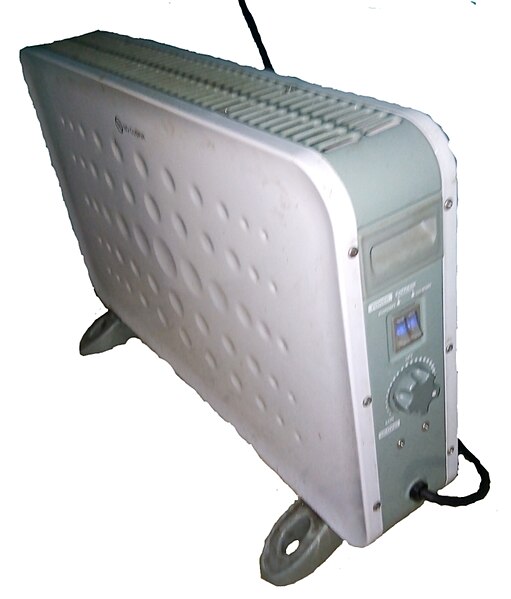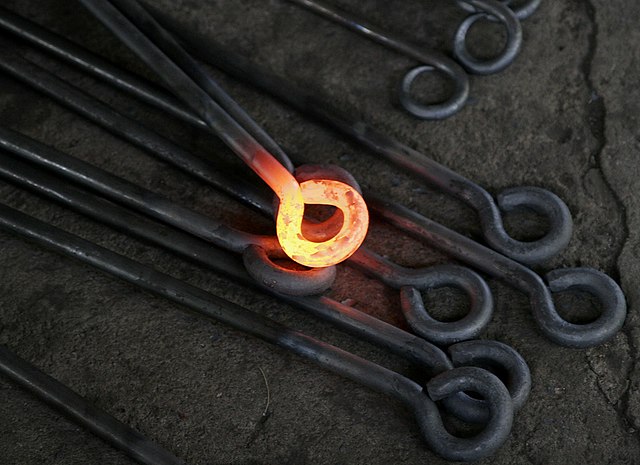A convection heater is a type of heater that uses convection currents to heat and circulate air. These air currents flow throughout the body of the appliance and across its heating element. This process takes advantage of thermal conduction in order to heat the air, reducing its density relative to colder air and causing it to rise.
A convection heater for single-room use.
Thermal radiation is electromagnetic radiation emitted by the thermal motion of particles in matter. Thermal radiation transmits as an electromagnetic wave through both matter and vacuum. When matter absorbs thermal radiation its temperature will tend to rise. All matter with a temperature greater than absolute zero emits thermal radiation. The emission of energy arises from a combination of electronic, molecular, and lattice oscillations in a material. Kinetic energy is converted to electromagnetism due to charge-acceleration or dipole oscillation. At room temperature, most of the emission is in the infrared (IR) spectrum. Thermal radiation is one of the fundamental mechanisms of heat transfer, along with conduction and convection.
Thermal radiation in visible light can be seen on this hot metalwork. Its emission in the infrared is invisible to the human eye. Infrared cameras are capable of capturing this infrared emission (see Thermography).
Radiant heat panel for testing precisely quantified energy exposures at National Research Council, near Ottawa, Ontario, Canada
Image: Human Infrared
Image: Human Visible





